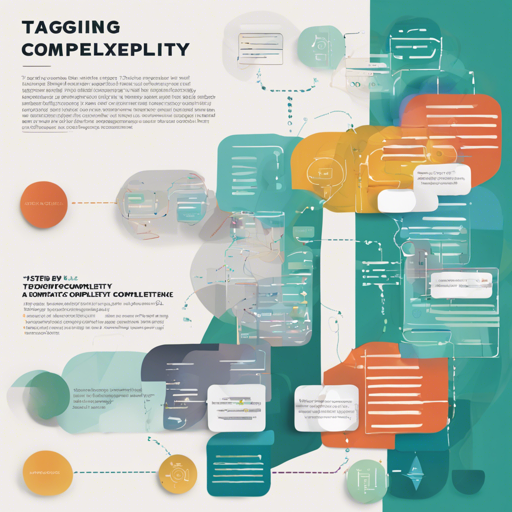In the realm of Natural Language Processing (NLP), understanding the syntactic complexity of sentences can significantly enhance the performance of various language models. This article will walk you through the process of using a syntactic complexity tagging model, derived from the research of Dr. Le An Ha at the University of Wolverhampton. Let’s dive into the technical waters with clarity and ease!
What is Syntactic Complexity Tagging?
Syntactic complexity tagging is the process of analyzing and marking different tokens (words or punctuation) in a sentence with specific labels that indicate their syntactic characteristics. This model is particularly useful for tasks like sentence simplification or understanding text structure.
Setting Up the Environment
Before you can use the model for token tagging, ensure that you have the necessary libraries installed. You will need torch and transformers libraries. You can install them using the following command:
pip install torch transformersUsing the Syntactic Complexity Tagger
To tag tokens with the syntactic complexity information, follow these steps:
1. Import Required Libraries
import torch
from transformers import AutoModelForTokenClassification, AutoTokenizer2. Load the Model and Tokenizer
Load the pre-trained model and tokenizer. It’s like fetching a well-prepared meal from a restaurant!
SignTaggingModel = AutoModelForTokenClassification.from_pretrained("RJ3vansSignTagger")
SignTaggingTokenizer = AutoTokenizer.from_pretrained("RJ3vansSignTagger")3. Define Your Label List
Just as a painter selects their colors, we need to define the labels that will classify our tokens:
label_list = [
"M:N_CCV", "M:N_CIN", "M:N_CLA", "M:N_CLAdv", "M:N_CLN", "M:N_CLP",
"M:N_CLQ", "M:N_CLV", "M:N_CMA1", "M:N_CMAdv", "M:N_CMN1", "M:N_CMN2",
"M:N_CMN3", "M:N_CMN4", "M:N_CMP", "M:N_CMP2", "M:N_CMV1", "M:N_CMV2",
"M:N_CMV3", "M:N_COMBINATORY", "M:N_CPA", "M:N_ESAdvP", "M:N_ESCCV",
"M:N_ESCM", "M:N_ESMA", "M:N_ESMAdvP", "M:N_ESMI", "M:N_ESMN",
"M:N_ESMP", "M:N_ESMV", "M:N_HELP", "M:N_SPECIAL", "M:N_SSCCV",
"M:N_SSCM", "M:N_SSMA", "M:N_SSMAdvP", "M:N_SSMI", "M:N_SSMN",
"M:N_SSMP", "M:N_SSMV", "M:N_STQ", "M:N_V", "M:N_nan", "M:Y_CCV",
"M:Y_CIN", "M:Y_CLA", "M:Y_CLAdv", "M:Y_CLN", "M:Y_CLP", "M:Y_CLQ",
"M:Y_CLV", "M:Y_CMA1", "M:Y_CMAdv", "M:Y_CMN1", "M:Y_CMN2",
"M:Y_CMN4", "M:Y_CMP", "M:Y_CMP2", "M:Y_CMV1", "M:Y_CMV2",
"M:Y_CMV3", "M:Y_COMBINATORY", "M:Y_CPA", "M:Y_ESAdvP", "M:Y_ESCCV",
"M:Y_ESCM", "M:Y_ESMA", "M:Y_ESMAdvP", "M:Y_ESMI", "M:Y_ESMN",
"M:Y_ESMP", "M:Y_ESMV", "M:Y_HELP", "M:Y_SPECIAL", "M:Y_SSCCV",
"M:Y_SSCM", "M:Y_SSMA", "M:Y_SSMAdvP", "M:Y_SSMI", "M:Y_SSMN",
"M:Y_SSMP", "M:Y_SSMV", "M:Y_STQ"
]4. Prepare Your Sentence
Choose a sentence to analyze. This is the heart of your operation, much like selecting the main ingredient in a dish:
sentence = "The County Court in Nottingham heard that Roger Gedge, 30, had his leg amputated following the incident outside a rock festival in Wollaton Park, Nottingham, five years ago."5. Tokenize the Sentence and Perform Inference
Tokenizing the sentence is akin to chopping vegetables before cooking. Let’s move towards the final dish:
tokens = SignTaggingTokenizer.tokenize(SignTaggingTokenizer.decode(SignTaggingTokenizer.encode(sentence)))
inputs = SignTaggingTokenizer.encode(sentence, return_tensors='pt')
outputs = SignTaggingModel(inputs)[0]
predictions = torch.argmax(outputs, dim=2)6. Display the Results
Finally, we present our results — it’s like serving your thoughtfully prepared meal:
print([(token, label_list[prediction]) for token, prediction in zip(tokens, predictions[0].tolist())])Troubleshooting Tips
If you encounter any issues while implementing the syntactic complexity tagger, consider the following troubleshooting tips:
- Library Import Errors: Ensure that you have all the required libraries installed. Run the install command again if needed.
- Model Not Found: Double-check the model name “RJ3vansSignTagger” for typos, or verify internet connectivity if accessing it online.
- Output Format Issues: Make sure the input sentence is correctly formatted before encoding. Check for excessive punctuation or spacing.
For more insights, updates, or to collaborate on AI development projects, stay connected with fxis.ai.
Conclusion
By following these steps, you can effectively tag tokens for syntactic complexity, enhancing your NLP tasks. The journey of understanding and processing language becomes simpler when we break it down into manageable components.
At fxis.ai, we believe that such advancements are crucial for the future of AI, as they enable more comprehensive and effective solutions. Our team is continually exploring new methodologies to push the envelope in artificial intelligence, ensuring that our clients benefit from the latest technological innovations.

